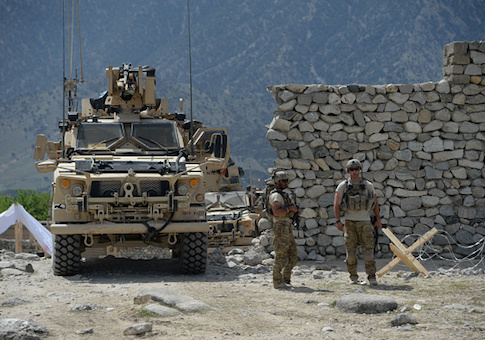Director of National Intelligence Dan Coats told Congress on Thursday that the security environment in Afghanistan will worsen over the next year amid a deadlock in the nation's drawn-out war.
"The intelligence community assesses that the political and security situation in Afghanistan will almost certainly deteriorate through 2018, even with a modest increase in military assistance by the United States and its partners," Coats told members of the Senate intelligence committee. "Meanwhile, we assess that the Taliban is likely to continue to make gains, especially in rural areas."
Coats testified the performance of Afghan security forces is expected to decline due to a combination of Taliban operations, combat casualties, desertions, poor logistics support, and weak leadership. He said Kabul will remain reliant on foreign military aid to prevent a government collapse until it strikes a peace agreement with the Taliban.
The U.S. military ceded the lead role in combat operations to Afghan security forces in 2014 amid a troop drawdown under former President Barack Obama. Lt. Gen. Vincent Stewart, director of the Defense Intelligence Agency, said the Afghan-led operation against the Taliban has produced "mixed results" over the past two years.
Stewart said Afghan security forces failed to meet strategic objectives they had outlined last year, such as making greater use of intelligence, surveillance, and reconnaissance, or ISR, capabilities to make troops more effective on the battlefield.
"Unless we change something where we introduce either U.S. forces, NATO forces that changes the balance of forces on the ground … the situation will continue to deteriorate and we'll lose all the gains that we've invested over the last several years," Stewart testified before the Senate panel Thursday.
President Donald Trump is weighing recommendations from top U.S. military officials to deploy 3,000 to 5,000 additional troops to Afghanistan to try to break the current impasse. The added forces would be tasked with countering a Taliban resurgence, in part by pressuring the militants to negotiate with the government.
The strategy proposal reflects calls from Army Gen. John Nicholson, the top U.S. commander in Afghanistan, who told Congress in February that he faced a shortfall of "a few thousand" troops amid a military stalemate.
The United States and NATO have nearly 12,500 troops on the ground, with American forces contributing roughly 8,500 military personnel.
American forces have two missions in Afghanistan: training and advising Afghan troops in conjunction with NATO forces and carrying out counterterrorism operations.
The Pentagon submitted its much-anticipated strategy proposal to the White House earlier this week, which would expand the U.S. military role in the fight against the Taliban and relax Obama-era restrictions on the movement of U.S. military advisers on the battlefield.
